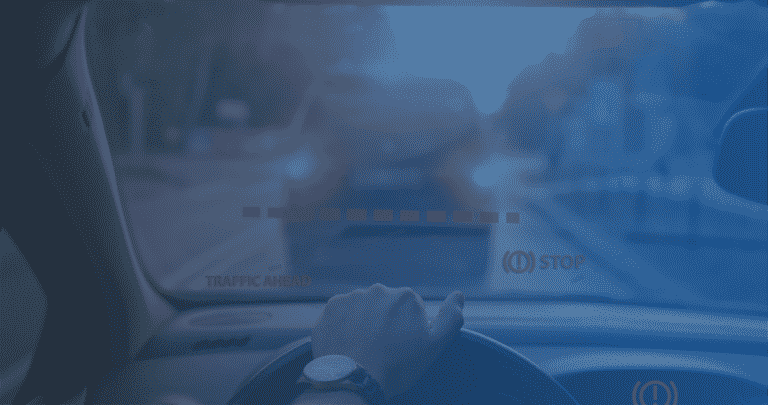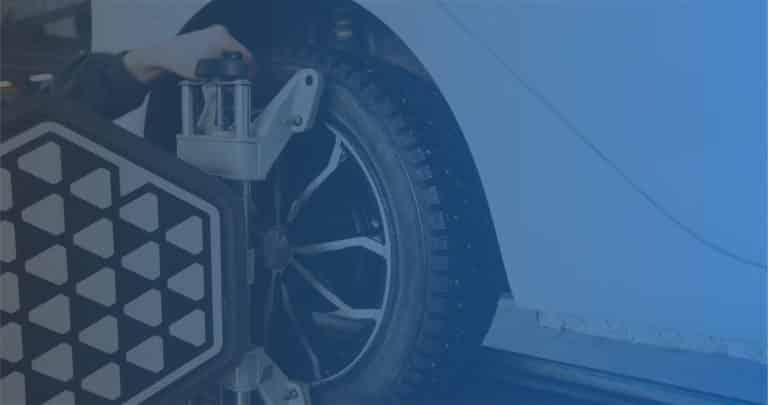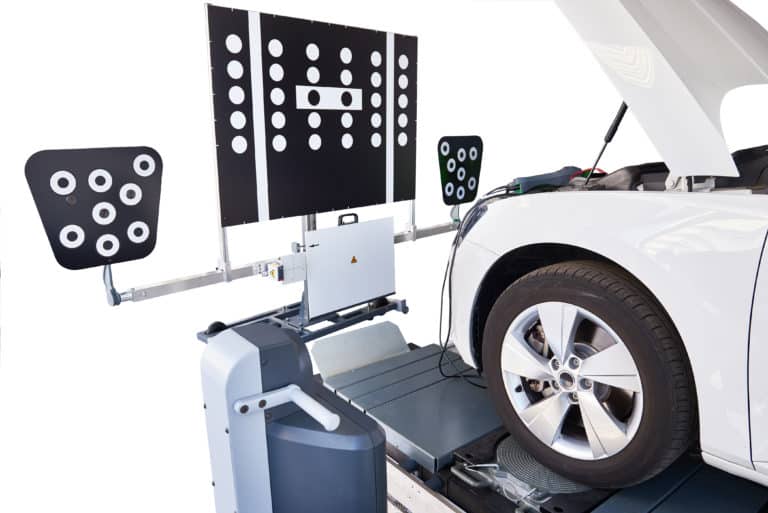While many in the industry are generally aware of advanced driver-assistance systems (ADAS), fewer understand the specific differences between the levels of automation, starting with Level 1. So, what exactly is Level 1 ADAS? How does it function, which features does it include, and why do they need to be calibrated? This blog post provides a clear and practical overview of Level 1 ADAS. Whether your team is already encountering ADAS-equipped vehicles or you’re preparing to expand your service offerings, understanding Level 1 is a key step toward completing safe, compliant, and efficient repairs.
What is Level 1 ADAS?
Level 1 Advanced Driver Assistance Systems (ADAS) is the first stage of automation in modern vehicles. Unlike the usual mechanical systems, these technologies assist the driver with one core task. This often falls under either steering or acceleration/braking assistance, but not both at the same time. In Level 1 systems, the driver remains fully responsible for situational awareness and control of the vehicle.
These systems are not self-driving by any stretch, but they mark the beginning of automated assistance in daily driving. You’ve likely seen them labeled as “driver assist” technologies. They might seem subtle at first glance; however, they’re doing real work behind the scenes to improve road safety and reduce driver fatigue.
The defining characteristic of Level 1 is that it automates a single aspect of vehicle control while needing the constant supervision of a human driver. If two functions (like lane centering and adaptive cruise) are active at the same time, the system qualifies as Level 2, not Level 1.
What Features Are Considered Level 1?
There are various ADAS features that improve the driving experience without taking over too much control. When used alone, these features are considered Level 1. Here are the most common ones that repair professionals should expect to see:
1. Adaptive Cruise Control (ACC)
Adaptive Cruise Control maintains a set speed like traditional cruise control, but with added sensors that cause the vehicle to adjust its speed based on the distance to the car ahead. If traffic slows, the system will reduce speed; once the lane clears, it resumes the preset speed. However, steering is still fully manual.
2. Lane Keep Assist (LKA)
Lane Keep Assist gently steers the vehicle to stay within lane markings if it senses unintentional drifting. It doesn’t take over steering entirely, which is more akin to full lane centering, but it nudges the driver back to the center of the lane. LKA is commonly combined with ACC, but then it gets into Level 2 territory.
3. Emergency Brake Assist (EBA)
Emergency Brake Assist detects the potential for a frontal collision and increases braking force if it senses that the driver’s reaction is too slow or weak. It supports, rather than replaces, the driver’s braking input.
4. Park Assist (Basic Versions)
Some Level 1 park assist systems help with steering into a spot but require the driver to control the brakes and throttle. These do not qualify as fully automated parking but do offer some assistance.
Each of these systems handles only one function at a time, making them great examples of Level 1 functionality. They’re designed to support, not replace, the driver.
How Does Level 1 ADAS Work in the Real World?
Level 1 systems rely on a network of sensors, cameras, radar, and software to analyze the driving environment and assist the driver in real-time. While not as complex as higher-level ADAS systems, they still require precise coordination and calibration to function properly.
Sensor Inputs
Most Level 1 systems gather data through forward-facing radar sensors (for ACC and EBA) and cameras (for LKA). These sensors detect distance, object speed, lane markings, and more.
Central Control Modules
The vehicle’s control module uses this data to calculate the appropriate response. This could be reducing throttle, gently braking, or steering assistance, depending on the situation. It must do so in milliseconds, leaving no room for misalignment or delay.
Everyday Use Cases
Picture driving down a highway with adaptive cruise control engaged. The car ahead slows down for traffic, and the vehicle automatically eases off the throttle to keep a safe following distance. Meanwhile, your hands are on the wheel and your eyes are on the road. That’s Level 1 ADAS in action. Or, imagine briefly drifting toward the shoulder on a long drive and the steering wheel gently nudges back to the center. Again, that’s Level 1 because there’s a subtle correction, not a total takeover.
Although these Level 1 features offer limited assistance, they can greatly reduce accidents by guiding the driver. Level 1 ADAS commonly deters accidents related to distraction, delayed reactions, or momentary fatigue.
Why Calibration Matters for Level 1 ADAS
Many shops still underestimate the importance of calibrating Level 1 ADAS features after repairs or part replacements. The truth is, even these “entry-level” systems depend on highly sensitive alignment and communication between components.
When Calibration is Necessary
Here are the most common scenarios where ADAS calibration is necessary:
- Windshield replacement (affects camera-based systems like LKA)
- Front-end collision repair (sensor or module displacement)
- Suspension or alignment changes
- Radar sensor removal or replacement
If sensors are off by even a few millimeters, the system may respond too late or in the wrong direction. That can result in false alerts, unnecessary braking, or failure to activate when needed. ADAS features are designed to help, not harm, the driving experience.
Static vs. Dynamic Calibration
Some calibrations can be completed in a shop using targets and alignment tools (static calibration), while others require road testing under specific conditions (dynamic calibration). Each OEM has different procedures, so following manufacturer guidelines is critical.
Shop Readiness
Technicians working with Level 1 systems should have access to proper scan tools, documentation, and calibration equipment. Ignoring calibration or attempting shortcuts isn’t just risky—it can also lead to liability issues if the system fails in a real-world scenario.
Whether it’s in the form of a mobile ADAS calibration service or an established calibration center, it’s important to keep ADAS systems properly calibrated so they can operate accurately and efficiently.
Learn More About the Different ADAS Levels and/or Start Your Own ADAS Sensor Calibration Center
As ADAS features become standard across a broader range of vehicles, the need for repair shops to adapt has never been greater. Gaining a clear understanding of Level 1 systems lays the foundation for your team to handle more advanced technologies in the future. At Car ADAS Solutions, we provide a turn-key ADAS calibration center solution with a fully customized approach. From planning your facility and selecting OEM-compliant equipment to technician training and workflow optimization, our team helps you become fully operational in just 45 days. Contact us today to learn how we can help your shop integrate ADAS calibration with confidence.







